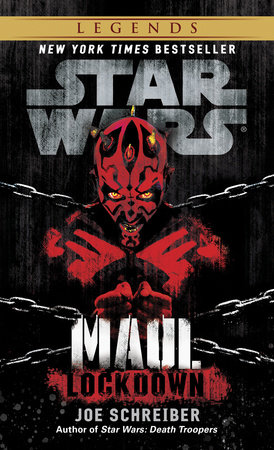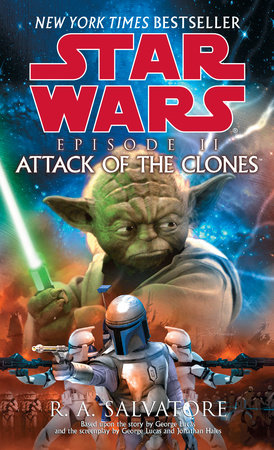Author Q&A
Interview with Drew Karpyshyn author of STAR WARS DARTH BANE
Question: How has your work in computer games influenced your writing?
Drew Karpyshyn: The most obvious influence comes from my work on Star Wars: Knights of the Old Republic. In researching the game I developed a real appreciation for the extended Star Wars universe; I became fascinated with the sheer depth and volume that existed beyond the movies. Being drawn into this world was the first big step towards writing Path of Destruction.
More generally speaking, I find that working in computer games has helped me better understand the concepts of agency and motivation. In game writing you tend to focus on presenting your story in a way that motivates players to make choices, then allows them to act on those choices. I like to think my non-game writing takes this principle and applies it to my characters, giving them strong motivations and more dynamic personalities. Since story is often about character, strong characters with drive and purpose help deliver a stronger overall story.
Q: What are the differences between writing for games and writing novels? Do you have any preference?
DK:While there are a lot of similarities, I find there are a couple major differences between the two genres. The first is in the final product: games (at least, BioWare games) tend to have a much broader and far-reaching scope than any novel. Take Kotor: we had nine major characters who could join the party, hundreds of people you could meet and roughly 500,000 words of dialog — about the equivalent of 5 full novels. However, because the player is in control of major sections of the story, a game is forced to deal with things on a more superficial level. We don’t know what order players are going to visit our worlds, or which choices they are going to make. Because of this, we sacrifice complexity to maintain control of the story. Conversely, in a novel the author has complete control. Every move by every character is known well in advance, allowing the author to spin a very complicated, intricate story that digs way, way down into the core of the major characters. In short, games are wide and far reaching but the story tends to stay more on the surface, while novels are much more limited in focus but incredibly deep.
The second difference has to do with the actual creative process. A novel is a very individual effort: the author sinks or swims on his or her own merits alone. I did get a lot of help from my editors, but in the end the book is quite clearly a reflection of my own personal vision. A game involves creative input from hundreds of people: artists, designers, programmers, animators, writers, etc. The end product is a reflection of a group vision, with every person contributing in their own way. In a game, you sacrifice some creative control for the sense of community that comes from sharing and building your ideas with other talented and creative people.
Q: Is Path of Destruction the first of a series? Will we see more of Darth Bane?
DK:I hope so! Without giving anything away, I can honestly say Bane’s saga doesn’t end with the events of the book. I’d love to spend more time with the character, but that’s not really my call. I hope fans feel the same way, and if Path of Destruction generates a demand for more Darth Bane, maybe the powers that be will tap me on the shoulder once again.
Q: The Rule of Two–talk about putting all your eggs in one basket! How can a system that relies on there being only two Sith in the entire galaxy at any time hope to survive? A single accident would be enough to wipe out the entire order forever, and being adept in the Force doesn’t immunize one against accidents.
DK:You have to be careful not to oversimplify the Rule of Two. On the surface it’s basic and straightforward, but this is a philosophy that helped to shape the course of galactic history. There are levels below the surface, and a greater depth and complexity than first meets the eye. I don’t want to give too much away, as I do explore this in the book, but one element that is critical to the philosophy but may not be readily apparent is a belief in the power of the Force and its ability to enhance the power of the individual. An accident *could* wipe you out, but if you are worthy of being a Sith Master you have to believe you are strong enough to shape your destiny through the dark side so that there are no accidents. The fact that this philosophy kept the Sith line alive for over a thousand years is a pretty strong argument that there is some merit to it.
Q: Where did you get the idea for Darth Bane?
DK:I think Bane’s first appearance was in the Dark Horse comics published in the mid 1990’s, but my decision to use him as my central character was based on discussions between me and my editors. The comics introduced this character, but he wasn’t the primary focus of that story. I found the character to be intriguing and compelling, but what really sold me was the opportunity to examine how someone evolves into the monster Bane finally becomes.
Q: How involved was LucasBooks in this project?
DK:Obviously they had to be involved on some level to make sure this novel fits in with the rest of the Star Wars Intellectual proberties. Path of Destruction introduces a new era in the Star Wars universe, and it was important to maintain the Star Wars “feel” and keep the story in line with existing continuity.
In the early stages of developing the story I had a lot of help from my editors Shelly Shapiro and Sue Rostoni, from Del Rey and Lucasfilm, respectively. I worked out the original concept of the book and then with their feedback hammered away at it until we all felt it was something really special. When it came to the actual writing, however, I was pleased to see they let me sink or swim on my own.
Q: How did your views of the Force, and especially the dark side, evolve in the course of writing this book?
DK:Much of the groundwork was laid through the work our team did on Kotor. I think the big breakthrough came when I realized that, in and of itself, the dark side philosophy is not “evil.” It’s really about the power of the individual rather than the acceptance of collective good. Understanding this makes you realize how appealing the dark side can really be, and that’s where the true danger lies. Nobody starts out wanting to be reviled or a villain, but through the book I hope readers can gain a better understanding of how it could actually happen.
Q: Since light and dark are two sides of a single thing, the Force, and not separate things themselves, why can’t Force users balance both disciplines, drawing from each as the situation requires? In other words, why isn’t there a third group of Force users, neither Jedi nor Sith but occupying a gray zone between them? I don’t know if you can answer that, but it’s something I’ve always wondered about…
DK:I think there are people like this. In Kotor we touched on this with the character of Jolee Bindoh, but I think there is an inherent flaw in being a “gray” Jedi. For me the key differences in the light and dark comes down to how you perceive the Force. Is it a great, binding energy that we serve by allowing it to act through us? Or is it a tool that we use to serve our own needs? Do you believe in the power of the individual, or the value of teamwork and the group? It’s hard to live your life believing that the best answer is to become a strong individual at all costs *and* be willing to sacrifice yourself for the good of the group. They ideas aren’t easily compatible, which is why “gray” Jedi are so rare.
Q: Was it a challenge to write a book featuring a villain as the main character? Did you have to go over to the dark side a bit yourself in order to write it?
DK:It was a challenge, because I didn’t want to soften Bane up at all. He is a monster, and I wanted to portray that. At the same time, I wanted the readers to sympathize with and understand him and his motivations. As for going over to the dark side, it wasn’t as hard as you think. Remember: the dark side itself isn’t evil. It’s more about individualism, which can actually be a very good and desirable thing. Self-improvement, confidence, attaining your goals through your dedication and hard work: these are noble traits. The trick comes in recognizing when this nobility becomes corrupted by greed or hate.
































